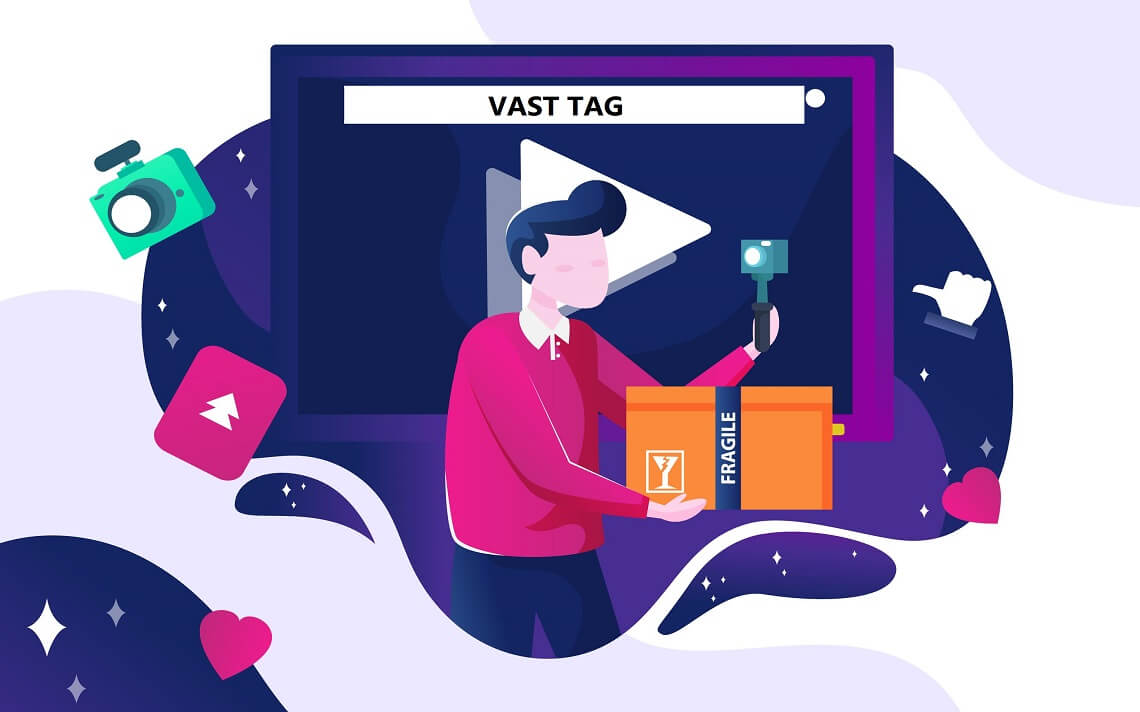
WHAT IS VPAID?
Table of Contents
Video Player-Ad Interface Definition (VPAID)
The Video Player Ad-Serving Interface Definition, or VPAID, is a key component of the Interactive Advertising Bureau’s Video Suite. Alongside other components like VAST and VMAP, the VPAID system simplifies the video ad-serving process and allows advertisers to launch detailed, large-scale campaigns despite an increasingly fragmented video-playing market.
Consider VPAID a complement to the core functions and interoperability laid down by VAST. Using Flash, before later moving to HTML5 and Javascript, VPAID adds interactivity by allowing you to deploy “executable ad units.” Essentially, you can include opportunities for audiences to engage directly with your ad material through their video players. Those opportunities can be as simple as giving viewers a button to share the ad to their social media account, or as impressive as building a “choose your own adventure” element into your video ad. Like other IAB Video Suite tools, VPAID ensures that you won’t need to engineer different ad materials for each available video player just to give audiences the same rich viewing experience.
First introduced in 2012, VPAID addresses some of the limitations of the VAST protocol. Originally conceived to deliver basic, in-stream video formats, VAST didn’t have the capabilities to incorporate and respond to viewer input and direct engagement. As the digital media environment moved towards greater degrees of interactivity, digital advertisers needed a way to deploy richer, more dynamic video ads without racking up costs. VPAID fulfills that need by giving advertisers and publishers a common framework for working with interactive video ads.
HOW DOES VPAID WORK?
What does it mean for an ad to be “executable”? As defined by the IAB, an executable ad uses software logic that allows viewers to provide input through their video players and/or allows those video players to collect detailed information from viewers’ actions.
Ordinarily, viewers wouldn’t be able to influence video ad playback, nor could a video ad change its behavior depending on real-time information from the video player. Similarly, advertisers wouldn’t be able to gather information beyond basic events like ad start, pause, clicks, and so on.
The VPAID API or system, however, creates a continuous link between the video ad and the video player, allowing them to coordinate in real time. Like VAST, VPAID can provide video players with a set of properties and parameters for a particular ad, informing the video player how to display it as intended. Depending on the advertiser’s specific goals, an ad unit can carry events that get dispatched to the video player whenever certain conditions (e.g., a click on a certain button) are met.
HOW DOES VPAID HELP YOU?
To fully grasp how VPAID can help you, it’s important to understand the status of interactive ads in the digital video advertising field.
Why Interactive Video?
For some years now, research studies have noted the advantages of interactive over standard video ads. In 2015, for example, several studies revealed considerable gaps between interactive and standard video ads when it came to crucial metrics like impressions served and completion rates. Viewers tended to watch more of an interactive ad, sitting through almost 85% of the ad’s duration as opposed to around 79% for its standard counterpart.
In an update to one of those 2015 studies, the interactive video continued to outpace standard video ads across all metrics in 2016. On average, viewers gave interactive ads about 44 more seconds of their time — a significant difference in an industry where every second matters. All in all, interactive video tallied almost six times the viewer engagement versus standard ads.
Advertisers chalk up these performance gaps to the added novelty and value that interactivity brings to video ads. The more a video ad has to offer, the more likely viewers are to actually pay attention. Compared to the relatively static setup of watching a standard ad unfold, an interactive video ad — in whatever form, be it additional pop-up buttons or a full-blown interactive mini-game — asks viewers to participate, respond, and generally become an essential part of the ad they’re viewing. Thanks to this, viewers develop a deeper investment in the ad, and the ad campaign leaves a more durable impression that’s likelier to translate to concrete sales.
Enter VPAID
With VPAID, advertisers can capitalize upon the opportunities presented by interactive ads on a broad scale and at relatively little cost. Not only does the system make it possible to incorporate interactive elements into video ads in the first place, but it also eliminates the need to craft separate ad units for each video player in an increasingly fragmented market. This means advertisers can roll out an interactive ad without worrying if a viewer will watch it through YouTube or a website’s exclusive platform, or on a tablet, a streaming TV set, or a desktop computer: so long as the video player itself supports the format that your ad requires (e.g., HTML5, Javascript), VPAID allows it to play, regardless of the specifics of the video player itself.
VPAID’s support for interactivity also gives you more freedom to get creative with your ad materials. With the ability to include all kinds of interactive touches, you can craft ad content that stands apart from the usual fare, boosting the chances of capturing your target audience’s attention.
Finally, the constant communication between the ad unit and the video player through VPAID allows you to collect granular data regarding user engagement and behavior. As VPAID can track and record users’ actions and responses over the course of video playback, you’ll have fewer problems charting important metrics like ad viewability, click-through rates, and so on. This gives you more information to track your ad campaigns’ impact and implement more precise adjustments to improve performance.


